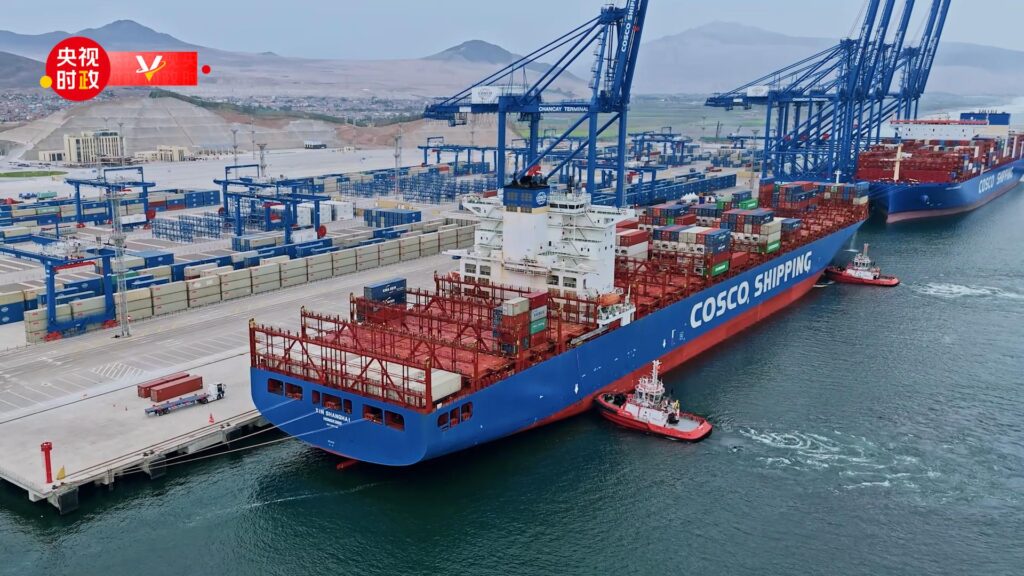
A far-reaching change is quietly brewing in the vast land of South America. The construction project of the "Two Oceans Railway" connecting the Atlantic and Pacific Oceans is steadily advancing in both the east and the west. In the future, the railway projects in Brazil and Peru will achieve a historic meeting in the mysterious Amazon rainforest. This grand project, like a giant steel dragon that will soon run through the South American continent, will profoundly reshape the economic structure and geopolitical map of South America.
1. Century Project: Grand Blueprint Becomes Reality
The "Two Oceans Railway", a concept jointly proposed by China, Brazil and Peru as early as 2014, has gone through years of preparation and planning, and is gradually moving from blueprint to reality. Its planned route is a feat, starting from the port of Ilheus on the east coast of Brazil, all the way west through the vast central plains, and then breaking into the dense and deep Amazon rainforest. In the rainforest, builders will face multiple challenges of high temperature, humidity, complex terrain and ecological protection. But this did not stop the pace of progress. After passing through the rainforest, the railway will also cross the majestic and steep Andes Mountains and finally reach the port of Chancay on the west coast of Peru. The entire journey is about 6,500 kilometers. Such an ultra-long-distance railway construction, of which 3,900 kilometers need to be newly laid, is expected to invest up to 80 billion US dollars. It is undoubtedly a world-renowned "century project".

2. Two-pronged approach: Brazil and Peru show their prowess
Brazil: heavy investment to build railway network
Brazil has shown firm determination in the construction of the "Two Oceans Railway" and has invested $17 billion to upgrade its railway network, focusing on the construction of the "East-West Railway" (from Porto Ilheus to Porto Velho). China Railway 10th Engineering Group has entered the construction site and undertaken the construction task of the 126-kilometer section. In this process, Brazil not only focuses on the construction of the main line of the "Two Oceans Railway", but also actively plans railway connections with surrounding areas, striving to build a more complete railway transportation network and give full play to the radiation and driving role of railways on the economy.

Peru: Port foundation laid, railway ready to go
In Peru, China COSCO Shipping invested 1.3 billion US dollars to build the "Port of Chancay", which was officially opened in 2024. This modern deep-water port, like a shining pearl inlaid on the west coast of Peru, has become the "gateway from South America to Asia" as soon as it debuted. Its annual designed throughput is 1 million TEUs, and its hardware facilities and throughput capacity are at the leading level. At present, Peru is vigorously launching the research work of the "Port of Chancay-Pucallpa" railway, which will cross the Andes Mountains directly to the Brazilian border, with an estimated investment of 14 billion US dollars. Once completed, it will be seamlessly connected with the Brazilian railway, opening up the logistics channel between the east and west coasts of South America.

3. The way out: Double breakthrough in economy and geography
Economic empowerment: shortening trade distances and activating inland economies
From an economic perspective, once the "Two Oceans Railway" is fully connected, it will bring about earth-shaking changes to South America. Take Brazil's trade as an example. At present, Brazil's soybeans, minerals, meat and other bulk goods are shipped to China mainly relying on three shipping routes. The route around the Cape of Good Hope is a long journey, taking 35-40 days, and is greatly affected by the weather at the southern tip of Africa. The efficiency is extremely low, but it currently carries 80% of cargo transportation; although the Panama Canal route is relatively short, the toll is high. A large ship may have to pay millions of dollars for a single passage, and there are often ship jams during the peak season, and the waiting time is as long as several days; the Strait of Magellan route is narrow and has huge winds and waves. Few ships dare to take the risk to pass through it throughout the year, and it has basically become a "backup option". After the completion of the "Two Oceans Railway", goods in central and western Brazil no longer need to go through the east coast ports for loading, but can be directly transported to the west coast Port of Chancay by rail, which can significantly shorten the freight cycle by 9-16 days and reduce logistics costs by more than 30%. This will not only greatly enhance the competitiveness of Brazilian products in the international market, but also make it possible for the inland areas of Brazil to form new economic growth centers, changing the long-term situation of excessive economic dependence on coastal cities.
Geopolitical reshaping: breaking monopoly and enhancing discourse power
From a geopolitical perspective, the construction of the "Two Oceans Railway" will reshape the geopolitical landscape of South America. For a long time, the United States has relied on its control over the Panama Canal to control the logistics lifeline and trade direction of South America to a certain extent. The emergence of the "Two Oceans Railway" will break this monopoly and provide South American countries with an autonomous and controllable trade channel. South American countries will be able to conduct foreign trade more freely, strengthen economic ties with each other and with other regions such as Asia, and thus enhance their voice and autonomy on the international political and economic stage. This is of great significance for promoting the integration process of South America and building a multipolar world political and economic landscape.

IV. Challenges ahead: Thorns and hope coexist
Of course, the construction of the "Two Oceans Railway" is not smooth sailing and still faces many challenges. On the technical level, the railway needs to cross complex and diverse terrains such as the Amazon rainforest and the Andes Mountains. Tunnels and bridge projects account for more than 40%, which places extremely high demands on engineering construction technology and construction capabilities. In terms of ecological protection, the Amazon rainforest is one of the most biodiverse regions in the world. How to balance economic development and ecological environmental protection during railway construction has become an issue that must be carefully considered. China has accumulated rich experience in ecological protection, such as the "ecological red line" management experience, which is expected to provide reference for the project in this process. In terms of international cooperation, the project involves multiple countries. How to coordinate the interests of various countries, properly handle relations with non-participating countries (such as Argentina, Chile, etc.), and avoid causing regional suspicion and conflicts are also difficult problems that need to be overcome in the process of project promotion.
Despite facing numerous challenges, China, Brazil and Peru have reached in-depth cooperation in top-level design. In 2024, the three countries signed joint statements in succession, fully connecting China's "Belt and Road" initiative with Brazil's "South American Integration Route Plan" and Peru's "Logistics Hub Planning", providing a solid policy guarantee and cooperation framework for the project. Even the environmental protection fund for the Amazon rainforest has been properly arranged, striving to ensure that the railway construction can not only drive economic development, but also protect this precious ecological home.
5. Future Outlook: The Steel Dragon is expected to take off
Looking to the future, when the East-West Railway in Brazil and the Andean Railway in Peru successfully meet in the Amazon rainforest, South America will have its first “steel backbone” that crosses the continent. By then, the abundant soybeans, copper and other resources in the central and western regions of South America can be shipped directly from the Pacific ports to China, and the transportation time will be shortened by nearly half compared to now. The economic map of the South American continent will be completely rewritten. The “Two Oceans Railway” is not only a transportation infrastructure, but also a symbol of South American countries working together to pursue economic sovereignty and development and prosperity. It will play an exciting movement for the development of South America in the tide of the new era and inject new vitality into global economic cooperation and development. Let us wait and see, and witness this steel dragon galloping across the land of South America, leading South America to a more glorious tomorrow.

